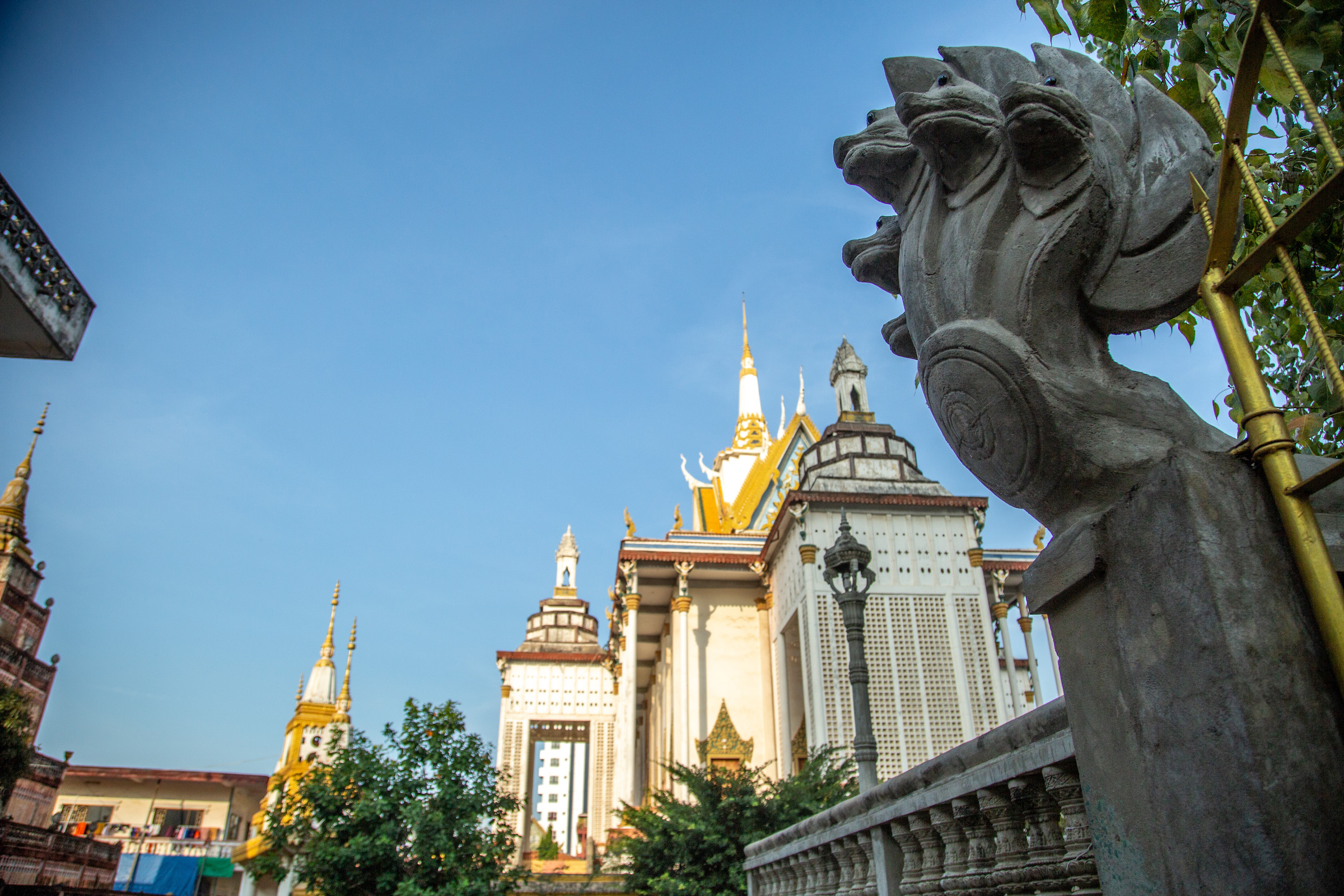The spirits are always nearby in Cambodia. Practically every house in both cities and the countryside offer up places of honor where nature gods and the souls of departed ancestors are invited to rest. These ubiquitous spirit houses range from rustic to palatial and the specific purposes for them vary by region, but you can count on finding them everywhere.

The most basic spirit houses are flimsy roadside affairs put together with scrap wood or metal sheeting. The fanciest spirit houses look like ornate miniature temples atop decorative pillars. Many of them feature nagas, the symbolically rich mythical serpents that represent fertility, steadfastness and royalty in Hindu and Buddhist traditions. The larger houses are handmade with concrete, then painted a blinding gold. They can take two to four days to build and go for the equivalent of $600 or more.

Buddhism, with its belief in reincarnation, is the official religion in Cambodia. Khmer traditions calling for honoring ancestors and nature spirits predates Buddhism and is a practice that holds firm, especially in rural areas. Spirit houses can fit into multiple traditions at once. Both Buddhists and animists believe that building spirit houses shows respect to spirits of people who died recently.

Buddhists believe that leaving offerings of food and water provide the recently deceased with the fuel they need to get to the underworld, where they can await rebirth. Family members place the ashes of the dead into spirit houses seven days after they died, sending them off on their journey to their next life, explained artisan Em Sameoun, who crafts spirit houses and Buddhist statuary at a roadside workshop in Cambodia’s Takeo province. Followers of animist beliefs leave food, flowers and incense in spirit houses to appease the nature spirits, lest they get angry and come inside people’s homes to inflict disease or other misfortune.

While the designs vary by region, spirit houses are also popular in Burma, Laos, Thailand, Malaysia, Indonesia and the Philippines.